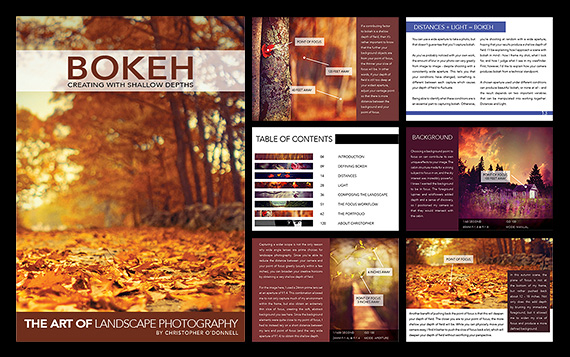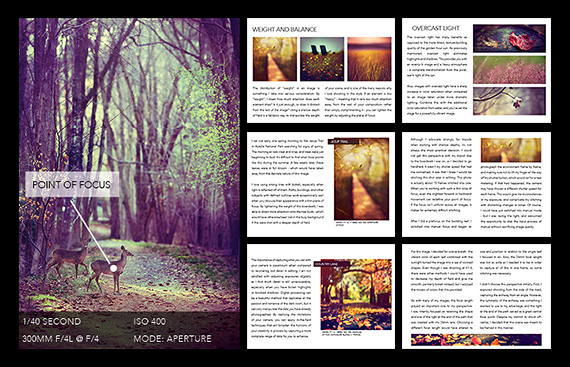The new edition of this guide is designed for landscape photographers – those who know the basics of landscape photography, but want to push their limits into a new realm of shallow depths of field & bokeh – to create landscapes that are unique and powerful. But anyone looking to learn bokeh will benefit from this 120+ page guide.

Bokeh: Creating with Shallow Depths
Landscape photography is typically an area that produces very deep depths of field. The author of this guide, Christopher O’Donnell, went in another direction and has made a career out of implementing aspects of selective focus and bokeh into his craft.
Bokeh is more than just having a blurred background or foreground – it is the quality of the blur. What constitutes “good” or “bad” bokeh is generally subjective, but there is a common understanding that a photo with strong bokeh is one with pleasing variations in shapes, colors, and textures in the out of focus parts – and most importantly, that the bokeh enhances the photo, not distracts from it.
By using a shallow depth of field and thin slices of focus, you can completely transform a landscape, manipulating an environment that usually can not be changed or controlled. You can create a complex or simple photograph by changing your depth, and this guide can show you how.
Topics Covered:
- Defining Bokeh
- Shooting Wide Open
- Wide Apertures and Bokeh
- Distances and Bokeh
- Narrowing the Depth of Field
- The Focal Length
- Long and Short Focal Lengths
- Finding Balance
- Light and Bokeh
- Direct Light
- Reflected Light
- Overcast Light
- Golden Light
- The Bokeh Workflow
- Composing the Landscape
- Lenses for Bokeh
- Focal Points & Focus

Pages from the new version of Bokeh: Creating with Shallow Depths
- Point of Focus
- Selecting a Focal Point
- Foreground Focal Points
- Background Focal Points
- Vantage Points & Perspectives
- Structures and Bokeh
- The Focus Workflow
- The Tripod
- Proper Focus for Bokeh: Step-by-Step
In addition to this comprehensive guide to finding and creating bokeh images, Christopher also opens up his portfolio and discusses 23 of his most popular photographs using shallow depths. You’ll find a detailed description for each image, discussing the creative workflows he used that led to the development of the final image you see.
Also included for each photograph is the EXIF data (the focal length, shutter speed, aperture, ISO, and metering mode used), as well as the “how’s” and “why’s” of any technical method that was applied: for example, if the image was exposure blended or if stitching was used to expand the frame.
Like This Article?
Don't Miss The Next One!
Join over 100,000 photographers of all experience levels who receive our free photography tips and articles to stay current:






Leave a Reply